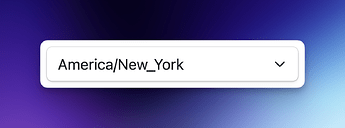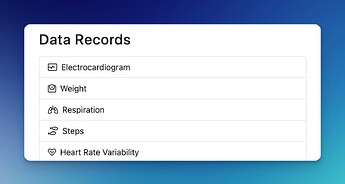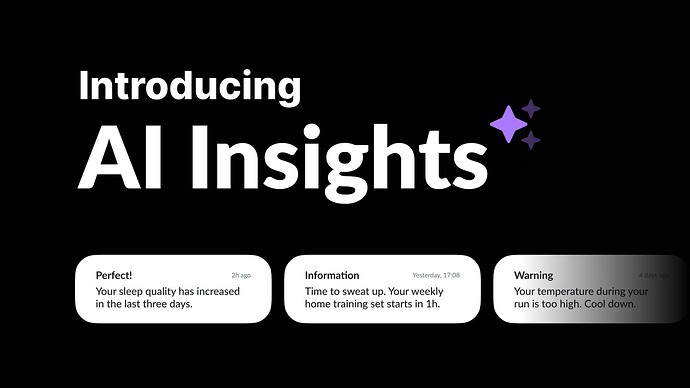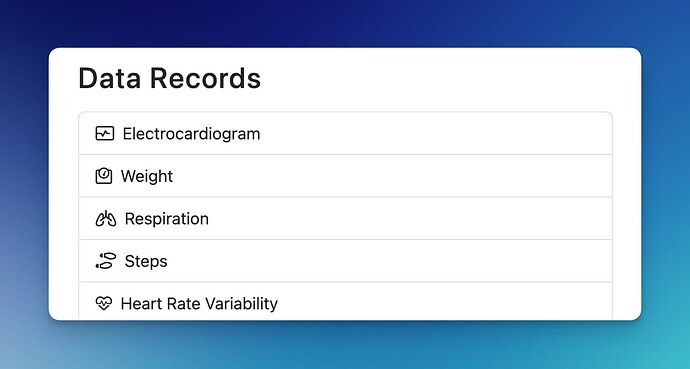Hey there! Aidlab’s Python SDK did not directly support SPo2 (blood oxygen saturation) measurements or cough detection ATM ![]()
Thanks for the answer ! Is this something that could be implemented ?
Apologies for my late reply, been on vacation. These are high-level data, computed on our cloud system (not on the device). They are available through API though.
Hey everyone, it’s been a while since I’ve posted any updates here. I’ve earned a couple of anniversary badges in the meantime, and a few gray hairs to add, but we’ve taken the AI advancements over the past year seriously to improve several aspects of our core business - namely, our tracker and the Cloud platform. Hope you don’t mind if I post it here ![]()
Dashboard
We’ve made a bunch of improvements to the Dashboard. These include:
Cleaner Dashboard
New Exporting Format
Simplifying data export, our new format allows you to download comprehensive reports of your health statistics
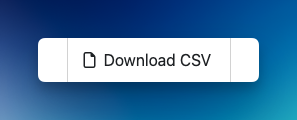
Custom Timezones
Our latest update introduces customizable timezones, enabling you to align your health tracking with your current location, ensuring accuracy no matter where life takes you.
More Organized Data
Our latest data structuring upgrade means you can categorize your health information more effectively, making it quicker to locate and analyze specific data sets, from sleep patterns to calorie intake.
Data Extraction
We’ve also been working to take things to another level for biohackers and data geeks by making data extraction easier for them. Most users are using Python, but a few other platforms have received updates, including Flutter. I’m not sure how many members of the Quantified Self forum are familiar with programming, but if there are some, you can check out our developer portal.
Lastly, some seriously huge things are going to be announced in the coming months. I believe we’re going to present something unprecedented in the market in terms of the ease and accessibility of self-measurement. I can’t say much about it right now, and I usually don’t try to build hype in this way, but as we have been working on this for a few months now, I couldn’t resist writing at least one sentence to let you know that we are cooking something up ![]()
Anyway, I wish you all safe biohacking and a Happy Easter!
Hey QS! We have launched Events—user-created or system-detected annotations that can be applied to various data points within the Aidlab ecosystem.
What are events?
Whether you’re marking a Sleep event manually or the system is detecting a Cough event, these annotations serve as powerful tools for categorizing and analyzing health and fitness data.
Why you would like to use Events?
- Events allow you to categorize and mark specific moments or activities, making it easier to organize and retrieve your data when needed.
- With Events, you can filter and focus on specific data points, enhancing the quality of your analysis and helping you to understand patterns or trends in your health and fitness activities.
- You have the flexibility to create custom tags for different types of events, whether it’s a sudden cough, a sleep period, or a peak performance during a workout, thus tailoring the data to suit your personal or professional needs.
- By marking important events, you can generate detailed reports that provide deeper insights into your physical activities, potentially leading to more informed decisions about health and fitness.
Read more about Events on our blog.
I hope they will significantly improve your workflow with your health data!
Annotations visible on timelines is so important and surprisingly difficult for people doing QS Show&Tell talks, most of them are made on slides after the fact, which means that they have to be redone and fiddled with all the time, they don’t “live” with the data. I don’t use Aidlab, but I do think it’s interesting that annotations are understood here not as boring or decorative but as a key feature.
Hi @Guzik, just wondering if there is an ETA for Aidlab 2. I am recovering from spinal cord surgery (adult tethered cord) – and, hopefully, from ME/CFS – so it could turn out to be exceptionally useful.
Hey @bcdavasconcelos unfortunately, we don’t have an ETA for its release just yet. Hang in there, and we’ll keep everyone posted as soon as we have more info.
All the best with your recovery!
@bcdavasconcelos we have just opened the waitlist for Aidlab 2 on our website. Feel free to sign up – you will receive an email notification when Aidlab 2 becomes available.
Hey all! Just wanted to share a few exciting updates we’ve made over the past weeks. We’re still hard at work on Aidlab 2, but in the meantime, we’re also improving some key parts of our current ecosystem (and adapting certain features for Aidlab 2).
- AI Insights : Our data analysis tool just got smarter with AI. You’ll now get even more precise, personalized insights into your health and fitness. Check out our blog post, where we explain how we use your data, safeguard your privacy, and how we built AI Insights.
- We are introducing the Reports Builder: Now, you can create custom reports, export to PDF/CSV, or access all of the reports data directly from our API.
- New Data Types: Managing motion activities and location data from the panel has become even easier. Now you can effortlessly monitor and analyze your daily activities and routes in one place.
-
Better Synchronization Your data is now sent more efficiently in the background, which means synchronization is faster and more reliable.
-
Updates in Aidlab API and Aidlab SDK We have added new data types and updated examples in some of the endpoints.

